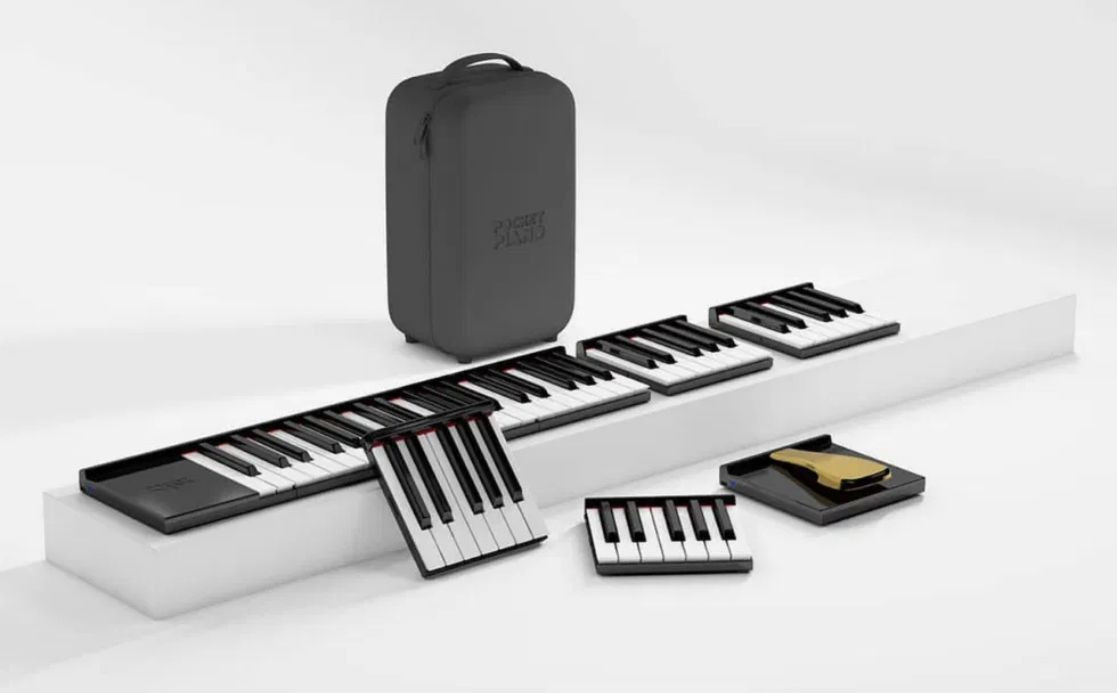Modular Pianos: What Are They and How Do They Work?

The music industry is being transformed by modular pianos. These pianos offer a fresh customization approach to the design and functionality of the piano. Modular pianos are made with interchangeable components that give the musician the ability to swap and upgrade the part of it as technology advances. This trend is especially appealing due to its adaptability and space efficiency approach. Today, we will be telling you what modular pianos are and why they have gained so much popularity among musicians.
What Are Modular Pianos?
A modular piano is a modern keyboard that is designed to present customization. It’s not like a standard acoustic or digital piano that has fixed parts. It is divided into many sections that are called modules; all of which are replaceable. Each of these modules offers a different function like key action, pedal, amplification, or sound generation. A player can mix and match these modules to create a setup that meets their needs.
Key Components of a Modular Piano
A modular piano has these 5 key components to it which are as follows.
1. Sound Engine Module
This is the core module that generates the sound and is similar to that of a digital piano. This module uses software and samples to mimic the sounds of an acoustic piano. This modular setup allows the pianist to upgrade the sound engine as better sound technology arrives without replacing the entire piano. These modular pianos have digital synthesizers or sample-based software that creates realistic sounds. Some of these modules even offer support for multiple sound engines to offer a flexible switch between varying sound styles.
2. Keyboard or Keybed Module
The keybed module of the piano is where the keys are present and determines the feel and action of the real piano. Modular pianos have varying keybed options such as weighted keys, semi-weighted keys, or full unweighted keys. This lets the user choose the keyboard that matches their skill level and playing style.
3. Pedal Module
Pedals are attached to the main body of a traditional piano. Whereas, in modular piano, the pedal nodule is independent; meaning the pianist can add it or remove it as they feel necessary. For instance, a classical pianist might need the three pedals; sustain, soft, and sostenuto, while on the other hand, the jazz pianist will prefer a simple configuration. Some of these pedal modules have different electronic options for better control and customization of the dynamics.
4. Amplification and Speaker Module
There are also separate amplification modules for a modular piano to provide it with better control of sound volume and projection. Amplification is adjustable in modular pianos with built-in speakers or the eternal sound system. This allows for the players to perform in any setting they prefer.
5. Controller and Connectivity Module
Connectivity is a must-have in this digital age and many modular pianos have these modules dedicated to controlling the external software. They can also connect them to devices like tablets, audio interfaces, and computers. USB and MIDI connectivity is quite common and lets the user connect the piano directly with the music production software. They can also use the controller for other sound modules or simply for the synthesizer. This is why modular pianos are ideal for musicians who require digital music production or online lessons.
How Modular Pianos Are Used
Modular pianos are gaining popularity among different levels of musicians. Whether a traditional pianist or a digital music producer, this is how they can use this instrument.
-
Classical musicians or classical pianists like the weighted key option and the customizable pedals for this instrument. They can update the piano for different modules without needing to replace it completely.
-
Studio Producers and musicians find this piece particularly helpful as it allows them to both record and produce music. By having a simple sound engine, a modular piano works perfectly with the DAWs to quickly edit and create music.
-
Performing artists are usually on the road, for them, modular pianos are easy to transport and set up. The artist can simply swap out the modules on the basis of their performance setting to give them flexibility for different performance environments.
Choosing the Right Modular Piano
When you are about to choose a modular piano, you need to factor in things like:
-
Your budget
-
Your Piano playing style
-
Your technical requirements for the instrument
Modular pianos come in a variety of configurations and it is best to choose the modules that work for your musical goals. For example, a classical pianist needs to have this instrument with a quality keybed and realistic weight key action. As for a composer, they need a sound engine that offers varying tonal options.
You also need to look for connectivity options as it will determine how the instrument will integrate with other software and digital systems. If you wish to improve your performance and recording capabilities; you need to choose a modular piano with MIDI or USB connectivity.
Conclusion: The Future of Modular Pianos
Modular pianos are truly revolutionizing how musicians are interacting with the instruments. To be able to customize and upgrade every part of your piano offers a whole new level of personalization for modern and traditional musicians alike. Any musician who seeks innovation and adaptability needs to choose modular pianos moving forward.
